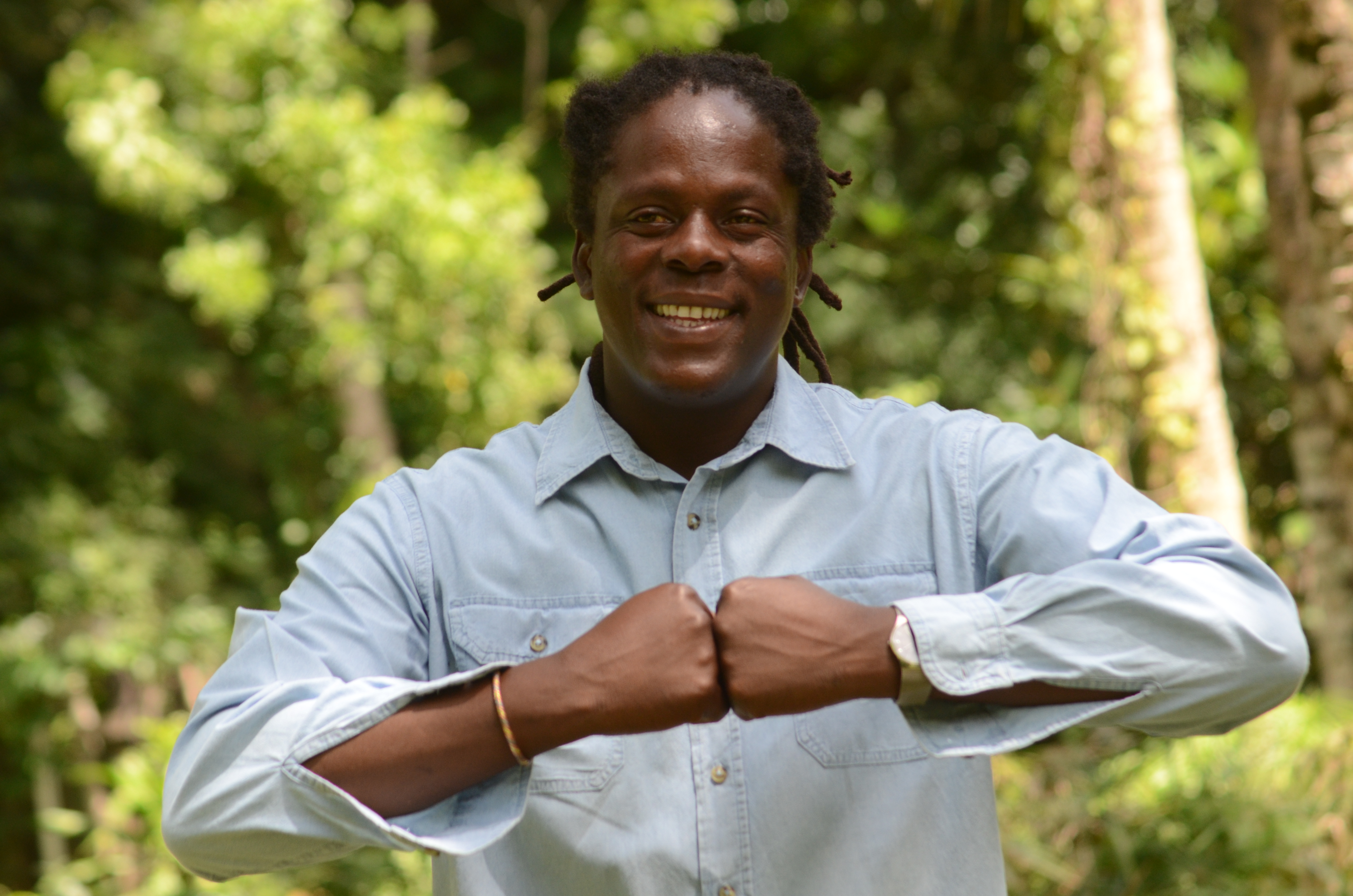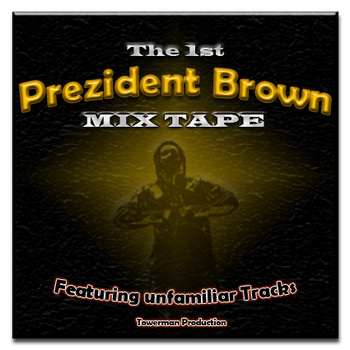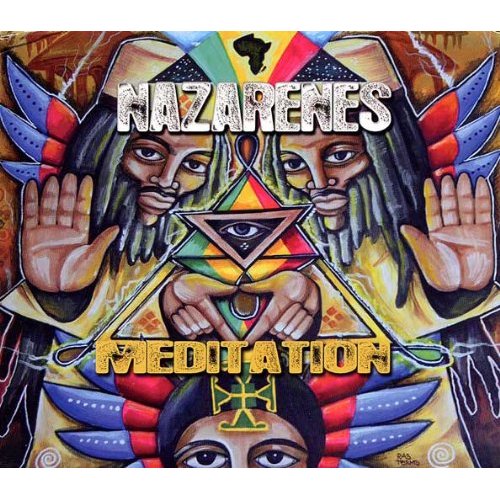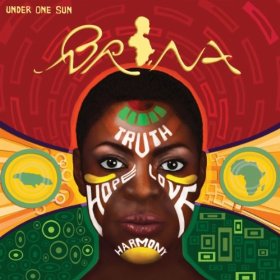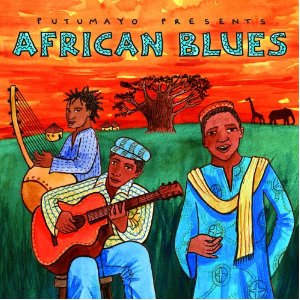BOB MARLEY & PETER TOSH, Get Up! Stand Up!
(Diary of a Reggaeophile)
by Fikisha Cumbo
[Brooklyn: CACE International, 2002]
(Diary of a Reggaeophile)
by Fikisha Cumbo
[Brooklyn: CACE International, 2002]
One Love: Life With Bob Marley and the Wailers
Words & Photographs by Lee Jaffe; Introduction & Interview by Roger Steffens
[New York: Norton, 2003]
Two new books about Bob Marley and the Wailers follow the template established by
Bob Marley: Reggae King of the World, first published in 1984. Like that book, both Lee Jaffe’s One Love: Life With Bob Marley and the Wailers, and Fikisha Cumbo’s Get Up! Stand Up! (Diary of a Reggaeophile) are oversized, coffee table-style books that rely heavily on visuals. These books are collages, cobbling together material 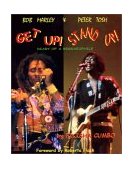 from various sources, and present a series of impressions, rather than a unified biographical narrative. And like Bob Marley: Songs of Freedom (Adrian Boot and Chris Salewicz, Viking, 1995), another book in this genre, both Cumbo and Jaffe offer some new perspectives about Marley and his scene.
from various sources, and present a series of impressions, rather than a unified biographical narrative. And like Bob Marley: Songs of Freedom (Adrian Boot and Chris Salewicz, Viking, 1995), another book in this genre, both Cumbo and Jaffe offer some new perspectives about Marley and his scene.
At first glance Jaffe’s book might look like the best of the two. Jaffe was, after all, Bob “best new friend” from early 1973 to mid-1974. His book has a big publisher (Norton) and is beautifully designed by Geoff Gans. Cumbo’s book is self-published, and the production value is less than stellar. In truth they have different strengths and weaknesses. Jaffe’s main draw will be his gorgeous color photos of Bob & Co. Yet although Cumbo has much less direct access to the Wailers’ scene, her book in many ways offers a more personal view of Bob and the Wailers. The strengths of her book are the interviews in which Marley, Tosh, the I-Threes, and others speak at leisure.
Jaffe’s photos are often arresting and sometimes beautiful. Take the first photo of Bob, on page 11, with Nesta in a burgundy tank top, shoulder-length dreads, and a drop-dead handsome smile. This could become a new iconic photo of Bob. Later in the book, on page 79, you can see that this is a blow-up of Bob posing with the Jackson Five on their visit to Hope Road in 1974. The all-hours access Jaffe had during about 18 months provides many priceless images. Many people have seen Jaffe’s shot of a muscular Bob, clad only in striped underwear, standing under the waterfalls at Cane River. In his book Jaffe preceeds that picture with a photo taken a few minutes earlier in which Bob is covering his body with shampoo. His dreads are white, the soap making them stand upright, matching the snowy foam of the water behind him. Bob looks both otherworldly, and the Rastaman at home in his natural element.
One Love is really a co-creation with Roger Steffens, Marley archivist and hagiographer extraordinaire. It is the text of Jaffe’s interviews with Steffens that fills most of the space beside his photos. Steffens also edited in segments of Jaffe’s own “notes,” written at Steffens’ request, “paintings in grammar that frequently introduced new words to this lifelong writer.”
Jaffe met Bob in January 1973, in a motel room where Jaffe was visiting Jim Capaldi, the drummer for Marley’s label-mate on Island Records, Traffic. Jaffe was then just 22, a former Penn State student who had already made a good deal of money selling herb, and was then making films with some top-flight stars such as Esther Anderson. Jaffe was well-connected in New York’s art and rock-and-roll scene. Like many people, he was primed for Marley’s Catch a Fire by watching the film Harder They Fall. As Bob’s music spread like wildfire among New York’s artistic elite, he could only compare their reaction to the reception of Jimi Hendrix’s first album in 1967.
The title of Jaffe’s book is unfortunate—“One Love” is already so over-used it often becomes a cliché. Jaffe’s book actually conveys little of the “One Love” ethic Bob popularized. The side of Bob that does come through in these photos and words is something more prosaic than the spiritual legend. Jaffe’s first “painting in grammar” is of Lee and Bob walking through a frozen night along Central Park West until they come to the house of Lee’s friend Brew, whose cavernous apartment is filled with bales of various sorts of marijuana. Jaffe informs us that he had already taken “hundreds” of acid trips, peyote, etc., but that his jaw dropped as he watched Bob light a snowcone Cheeba. “I knew…I was entering a new world. The world of The Most High.”
Much of Jaffe’s value to the Marley posse seems in fact to have been his ability to help them hustle herb. According to Jaffe, he and Bob drove constantly in the first years of Bob’s Island career, in an “interminable, relentless, intractable…search for the better herb.” They would also drive many miles out of the way to find a particular sort of mango that could only be found at a particular moment on a remote tree. Jaffe says that Bob was an excellent, conscious driver, in contrast to Peter Tosh.
In short order, Jaffe had dropped plans for a film in Chile (a casualty of the CIA coup against Salvador Allende) and was headed with Bob, Island chief Chris Blackwell and his entourage for island-hopping in the Caribbean, living the life of rock and roll royalty.
Jaffe abandoned his prior life and moved into Bob’s new digs at 56 Hope Road. In fact, in the early days, it was only Bob, his lover Esther Anderson (to whom Jaffe had introduced him), and Jaffe living at Island House. Yet despite this intimate access, the long hours jamming on harmonica, the many trips around the island, Bob himself remains curiously out-of-focus in this book.. One gets little sense of Bob’s or Peter’s personalities, as come across so vividly in Cumbo’s interviews.
What we do get with Jaffe is some further details that can be added to prior portraits. We get further evidence of the collective manner in which Bob wrote songs. Jaffe claims to have co-written “I Shot the Sheriff,” and claims that the song was in part a humorous commentary about Bob hanging out with a “white man,” his “new best friend,” Lee Jaffe. We also get some sense of the communal atmosphere at Hope Road. Jaffe says he lived without money for his two years with Bob. But Bob always made sure he ate, part of a dependency that would grow into the thousands by his death.
We also get some views of how Bob was “in but not of” the world of rock and roll glamour, and yet learned to savour its fruits, in his own way, as much as the next rock star. For a short time Jaffe ran Island’s shoestring American office, and was responsible for smuggling the Wailers into the U.S., through Toronto, so that they could play their famous gig with Bruce Springsteen at Max’s. Jaffe was responsible for scoring the band’s herb, and for booking them at the Chelsea Hotel, the only place near Max’s in which this band that “looked like we were going to overthrow the government” could move around unmolested, like any other freak in this famous hangout. Jaffe introduced Bob to “a fair Danish princess” named Mooskie who was Bob’s inseparable lover for that week in New York, putting a visible glow on his face.
Jaffe clears up some misconceptions. He says that the legend of Marley “blowing Sly Stone off the stage” in 1973, as Steffens has said often, was “very far from the truth.” He sheds light on new manager Don Taylor’s habit of standing in front of band members—this was not about hiding Jaffe’s “whiteness,” as some have said, but part of Taylor efforts to freeze out those who previously had intimate access to the Gong. Jaffe does provide an insider’s view at a few moments, mostly when he is involved directly in the band’s runnings. He is extremely proud when Bunny Wailer, who had a reputation as anti-white, announced to the crowd at Hope Rode one day that “Lee a Wailer now.” And his membership is confirmed when he plays his harmonica on stage with the band for the first time on “Roadblock,” when the Wailers open in Kingston for Marvin Gaye.
Soon after Taylor came on board, tensions grew between Marley and Jaffe. The two finally came to blows in a Los Angeles motel room. Jaffe says this conflict centered on his dismay that Bob had allowed “Knotty Dread” to be retitled “Natty Dread,” and that Bob had not given Jaffe any credit on the album, while crediting others who had nothing to do with the album’s composition. Jaffe played a last concert at Central Park in 1975—the same concert where Cumbo saw Bob for the first time—and then left to manage Peter Tosh. (Bob later proved that some brotherly love had survived the fight when he arranged, from abroad, to bail Jaffe out of a Kingston jail).
Jaffe’s access to Marley’s circle ends just about the same time that Cumbo’s begins. “Bob was on a new, and what seemed to me less idealistic, path,” he writes, in an assessment that coincides with what Tosh told Cumbo after the 1975 concert with Stevie Wonder.
Picture this: On June 20, 1975, Fikisha Cumbo chats with Bob Marley on the 24th floor of a Barbizon Plaza hotel room. Ms. Cumbo has only discovered reggae a couple of weeks earlier, but has already caught Marley and the Wailers in concert at Central Park, and now has scored an interview with Natty Dread himself.
Marley is in an expansive and humorous mood. At one point point Cumbo asks Bob about politics and he responds: “Politics! See, I am a man of God and me come to do God’s work.” Bob hands Cumbo his spliff, and she takes a long draw on it before giving it back.
This bit about Marley sharing his spliff is one of many details that were cut from the version of Cumbo’s interview published in Reggae King of the World. This interview is the best reasoning with Marley I have ever read. It was on this occasion that Bob volunteered his famous prophecy: “My music will go on forever.” It is on this day when Bob responds to a question about his career success by describing Selassie (indirectly) as “the perfect father for me” who “grow me just the way how a son supposed to be grown.” And it was during this same interview when Bob reacted to Cumbo’s comments about the Age of Aquarius by declaring: “Ya can’t tell me about white and black…We fly a color which is red, gold and green. Now we’re not prejudice, because we leave our judgement unto JAH.”
Ever since reading this interview, I’ve wanted to know more about how it came about. What led Bob, at this moment, to these particular heights of consciousness? It was because I had read and cited this interview many times that I knew Fikisha Cumbo’s name. And it was this interview that made me want to read her book Get Up! Stand Up!, about her time with Marley and Peter Tosh.
As a woman, as an African American, and as a grad student, Cumbo provides some points of view that were rare in 1975. Like Jah knows how many people, Cumbo was turned onto reggae music through Bob Marley’s album Natty Dread. Less than a week after hearing reggae for the first time, she scored press tickets to the Wailers’ performance at the Schaffer Festival in Central Park. Her first impression was that the place was “packed to the rafters with mostly White people.” There were “only a handful of Black people here and most of [them] come from the Caribbean.” [In an interview Cumbo conducted with the I-Threes in the spring of 1976, Rita Marley and Judy Mowatt theorize that “White folks are quick” and “more receptive,” while Marcia Griffiths believes that “Black people take it for granted.”]
Like countless women after her, Cumbo celebrated her new enthusiasm for reggae by having extensions put into her hair. After the Central Park concert, she is led by Ozzie Brown, Taj Mahal’s manager, back to Marley’s tiny “sauna-hot trailer” where Bob, typically, is completely surrounded by fans. Cumbo kneels beside Bob, “my long hair extensions falling slightly across his thigh,” tells him she is doing a master’s thesis on Musicians of the African Diaspora, and asks for an interview.
Cumbo arrives at her interview, some days later, “wearing three-inch green sling pump heels,” which make her six feet one inch tall, she observes, towering over the diminutive Bob. Just how many six-feet female African American academics do you think were interviewing Bob Marley and Peter Tosh in 1975? She put these men at ease, as few journalists did, with fascinating results. Cumbo comes into their lives with a new fan’s enthusiam, but also with some perspectives that today we would call “Afrocentric.” And they respond with more of their full selves than what they normally revealed. This means we get the warts as well as the wisdom. In this 24th floor interview with Marley, for instance, in several sections edited out of the Reggae King of the World version, Bob clearly signals his homophobia and sexism, in sometimes crude ways, while in the same breath talking about “cutting the negative t’ing out entirely.”
Cumbo next encounters Marley in Kingston in August of 1975. Marley encourages her incipient career as a photographer, saying “You take some different kind’a picture.” On this and a return trip in October, Cumbo begins to experience the sexism and machismo of Jamaican culture. But she is also drawn to the Rastas, and begins to remodel herself according to their norms, trading in tights pants or short skirts for long skirts. We get a fan’s eye view of rehearsals in a home-made, unfinished, dirt floor room at Island House. Cumbo realizes that her affinity lies not with American R&B and its reigning superstar, Stevie Wonder, who has come to Jamaica for “The Dream Concert” with Marley, but with the Wailers’ spiritual vibes. Through music, Marley and everyone around him is “transformed into ecstasies of positive vibrations…beyond time, beyond space.”
Cumbo’s first interview with Tosh was on October 7, 1975, after the “Dream Concert.” Cumbo has experienced the Wailers’ scene as a “spiritual gathering of souls,” but Tosh expresses his discontent with Marley’s scene “from a spiritual point of view.” As their interview ends, Tosh declares with finality that “me not getting back with Bob again.”
From this point on, Cumbo develops a friendly relationship with Tosh, while her interactions with Marley are limited to brief exchanges, and just being part of his retinue as he holds court on visits to New York. Her personal and professional relationship with Tosh in fact is the cornerstone of Get Up! Stand Up!—aptly titled after the anthem co-written by Peter and Bob.
One thing that comes across clearly in Cumbo’s description of both men is the sexual heat they generated in the women around them. Cumbo seems to have been attracted to Tosh almost from the beginning. In 1977, she spent several days roaming about Jamaica with Tosh in his green Hillman Hunter, on assignment for Head Magazine, which wanted a photo of Peter in a ganja field.
This romp through Jamaica with Tosh is perhaps the book’s best chapter. It shows Tosh in his own element, interacting with people all over yard who clearly love him. We begin to get a clearer sense of Tosh’s personality than can be had by portraits of the man outside Jamaica, or on stage. “Peter was a law unto himself,” as Cumbo’s Jamaican friend Maxine Walters says.
It is really outdoors, away from the concert scene, where Cumbo exhibits her photographic flair. This chapter has some memorable images. There is Tosh in his yard, chewing off the same piece of sugar cane with his pet parrot Freddie, so it almost looks like they’re kissing. Or Tosh in front of Music Fair, lighting his pipe as he stands beside a Che Guevara poster, wearing the same beret as Che but with a “Legalize It” button instead of a star.
Because Tosh is at ease with Cumbo, we rarely see the abrasive arrogance that is often apparent with other reporters. Tosh is at times pompous with Cumbo, but more often humorous and charming. The sexual undertone of their relationship finally become explixcit at their last meeting, in September 1983, in Tosh’s apartment off Central Park West. They have by now hung out dozens of times alone in Tosh’s various motel rooms, without anything romantic happening. But this time she is immediately tuned into Tosh’s “bulging thigh muscles that pop out” of “very short jogging shorts.” In their first interview, Tosh had bragged that he had around 50 children. Now he teases his friend Fikisha: “We’ve known each other for 8 years and you don’t have one of my sons by now?” He continues to make indirect sexual overtures, and finally invites her to “invite me to your yard.”
“ My yard?” she replies, dumbfounded.
“ Yeah, your yard. I want to come and spend a few days with you.”
Cumbo tells Peter that this could be hard to arrange–she has a teenage son Malik (then 13). She remembers all the other women she has seen move in and out of Peter’s life, and she is sure that she doesn’t want to be one of those women. But they share a passionate kiss before she leaves. Afterwards, Cumbo is “torn between being deliriously happy and strikingly melancholy, for I know in my heart that I will never invite Peter McIntosh to my yard.”
From the beginning, Cumbo had witnessed a troubling “male thing” among Jamaicans, who treated women as second class citizens. She witnessed the strict gender segregation on Wailers tours, with a “male section” and a “female section” which each had their own gender-appropriate cook. While the men played the field, Bob treated the I-Threes almost like prisoners, telling Judy Mowatt that “your lips are for singing, not kissing.” Even the most worldly of the Rasta women seemed to have interalized this sexism. When Cumbo interviewed the I-Threes in 1976, they reflexively endorsed their subordinate status. “Men are first in creation,” said Mowatt, following the Genesis model. “The man is there to teach the woman.”
So in the end, having seen all the signs, Fikisha Cumbo repressed her own desire. She declined to cross the line from friendship and professional affiliation into being the (temporary) lover of a Rastaman. As much as she longed for that intimacy, she knew that she could not bring all of her self-respect into such a relationship.
I respect Fikisha greatly for making that choice, at a time when so many women were throwing themselves at Marley and Tosh. And I salute her for the research, writing, and production that went into this book, a true labor of love. Cumbo’s book, and Jaffe’s, are both valuable additions to the growing body of works about Marley, Tosh, and the rest of the Wailers’ scene; the culture they emerged from, and the cultures still being created out of their mighty works.

